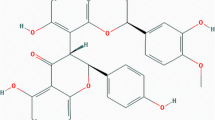Abstract
Valproic acid (VPA) has been used for many years as a drug of choice for epilepsy and mood disorders. Recently, evidence has been proposed for a wide spectrum of actions of this drug, including antitumoral and neuroprotective properties. Valproic acid-mediated neuroprotection in vivo has been so far demonstrated in a limited number of experimental models. In this study, we have tested the neuroprotective potential of chronic (4 + 1 weeks) dietary administration of VPA on degeneration of cholinergic and GABAergic neurons of the rat nucleus basalis magnocellularis (NBM), injected with the excitotoxin, ibotenic acid (IBO), an animal models that is relevant for Alzheimer’s disease-like neurodegeneration. We show that VPA treatment significantly protects both cholinergic and GABAergic neurons present in the injected area from the excitotoxic insult. A significant level of neuroprotection, in particular, is exerted towards the cholinergic neurons of the NBM projecting to the cortex, as demonstrated by the substantially higher levels of cholinergic markers maintained in the target cortical area of VPA-treated rats after IBO injection in the NBM. We further show that chronic VPA administration results in increased acetylation of histone H3 in brain, consistent with the histone deacetylase inhibitory action of VPA and putatively linked to a neuroprotective action of the drug mediated at the epigenetic level.




Similar content being viewed by others
References
Caruccio L, Banerjee R (1999) An efficient method for simultaneous isolation of biologically active transcription factors and DNA. J Immunol Methods 230:1–10
Chuang D-M (2005) The antiapoptotic actions of mood stabilizers. Molecular mechanisms and therapeutic potentials. Ann N Y Acad Sci 1053:195–204
Contestabile A, Ciani E, Contestabile A (2004) Dietary restriction differentially protects from neurodegeneration in animal models of excitotoxicity. Brain Res 1002:162–166
Ellman GL, Courtney KD, Andress V, Featherstone MR (1961) A new and rapid cholorimetric determination of acetylcholinesterase activity. Biochem Pharmacol 7:88–95
Fischer A, Sananbenesi F, Wang X, Dobbin M, Tsai LH (2007) Recovery of learning and memory is associated with chromatin remodelling. Nature 447:178–183
Fonnum F (1975) A rapid radiochemical method for the determination of choline acetyltransferase. J Neurochem 24:407–409
Fonnum F, Walaas I, Iversen E (1977) Localization of cholinergic, GABAergic and aminergic structures in the mesolimbic system. J Neurochem 29:211–230
Hao Y, Creson T, Zhang L, Li P, Du F, Yuan P, Gould TD, Manji HK, Chen G (2004) Mood stabilizer valproate promotes ERK pathway-dependent cortical neuronal growth and neurogenesis. J Neurosci 24:6590–6599
Johannessen CU, Johannessen SI (2003) Valproate: past, present, future. CNS Drug Rev 9:199–216
Kazantsev AG, Thompson LM (2008) Therapeutic application of histone deacetylase inhibitors for central nervous system disorders. Nature rev Drug Discov 7:854–868
Kim HJ, Rowe M, Ren M, Hong JS, Chen PS, Chuang DM (2007) Histone deacetylase inhibitors exhibit anti- inflammatory and neuroprotective effects in a rat permanent ischemic model of stroke: multiple mechanisms of action. J Pharmacol Exp Ther 321:892–901
Lowry OH, Rosenbrough RG, Farr AL, Randall RJ (1951) Protein measurement with the folin phenol reagent. J Biol Chem 193:265–275
Monti B, Polazzi E, Contestabile A (2009) Biochemical, molecular and epigenetic mechanisms of valproic acid neuroprotection. Curr Mol Pharmacol (in press)
Morland C, Boldingh KA, Iversen EG, Hassel B (2004) Valproate is neuroprotective against malonate toxicity in rat striatum: an association with augmentation of high-affinity glutamate uptake. J Cereb Blood Flow Metab 24:1226–1234
Nott A, Watson MP, Robinson JD, Crepaldi L, Riccio A (2008) S-Nitrosylation of histone deacetylase 2 induces chromatin remodelling in neurons. Nature 455:411–415
Phiel CJ, Zhang F, Huang EY, Guenther MG, Lazar MA, Klein PS (2001) Histone deacetylase is a direct target of valproic acid, a potent anticonvulsant, mood stabilizer, and teratogen. J Biol Chem 276:36734–36741
Sparapani M, Virgili M, Ortali F, Contestabile A (1997) Effects of chronic lithium treatment on ornithine decarboxylase induction and excitotoxic neuropathology in the rat. Brain Res 765:164–168
Tariot PN, Loy R, Ryand JM, Porsteinsson A, Ismail S (2002) Mood stabilizers in Alzheimer’s disease: symptomatic and neuroprotective rationales. Adv Drug Deliv Rev 54:1567–1577
Winkler J, Thal LJ, Gage FH, Fisher LJ (1998) Cholinergic strategies for Alzheimer’s disease. J Mol Med 76:555–567
Acknowledgments
The present research was supported by grants from the Italian Ministry for Universities and Research and from the Institute for Advanced Studies of the University of Bologna. The skillful technical assistance of Miss Monia Bentivogli is gratefully acknowledged.
Author information
Authors and Affiliations
Corresponding author
Rights and permissions
About this article
Cite this article
Eleuteri, S., Monti, B., Brignani, S. et al. Chronic Dietary Administration of Valproic Acid Protects Neurons of the Rat Nucleus Basalis Magnocellularis from Ibotenic Acid Neurotoxicity. Neurotox Res 15, 127–132 (2009). https://doi.org/10.1007/s12640-009-9013-5
Received:
Revised:
Accepted:
Published:
Issue Date:
DOI: https://doi.org/10.1007/s12640-009-9013-5




